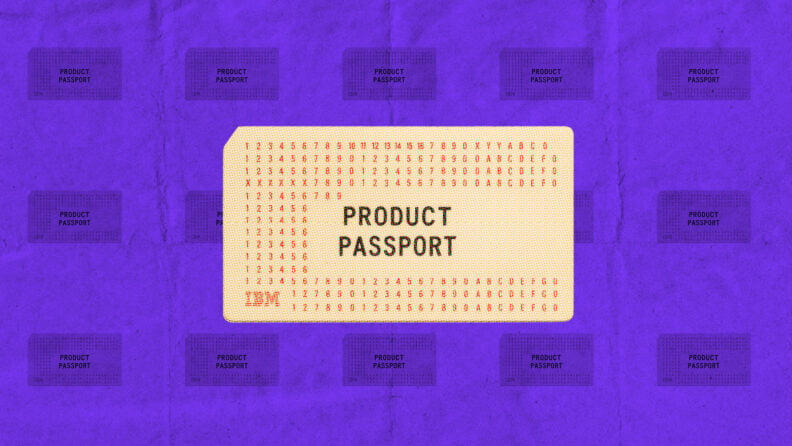Environmental sustainability is a feel-good buzzword, but it’s also good business. Climate change is hammering communities across the globe, and consumers are demanding greener products.
Companies everywhere are rethinking their carbon footprints and dialing down emissions. Not only is it good for the planet, but going green brings in the green, boosting profits and earning serious brand love along the way.
Nearly 60% of millennials would be willing to pay a premium for a sustainably sourced product. Cut down on waste, stay on-trend with eco-conscious shoppers, tighten operations, and keep regulators happy as governments crack down on climate impact... OK, so your tech team's to-do list just got a bit longer. But nailing it means your business stays ahead of the curve.
Europe is about to flip the script with Digital Product Passports (DPPs). By 2026, they’ll be mandatory for EU businesses—so if you sell in Europe, you’re on the hook, no matter where you’re based. For American CTOs, it’s a big chance to lead on sustainability, meet rising consumer expectations, and build technology stacks that can handle the DPP revolution.
For U.S. retailers, getting DPPs right means product and tech teams need to play nicely together. Seamless integration won't happen by accident. You’ll need a composable tech stack that’s flexible enough for new regulations and robust enough to handle constant change. Since compliance and sustainability are now joined at the hip, having a flexible, modular tech stack is where it's at.
What are Digital Product Passports (and Why Do We Need Them)?
DPPs are exactly what they sound like – digital records of all the places a product has been. While that’s a drastic oversimplification, the idea is accurate. DPPs host all the data related to the lifecycle of a product across its entire value chain. The materials, the manufacturer and manufacturing details, repair data throughout the lifecycle, supply chain details, and so forth.
You might think of it a bit like CarFax, but for all products, not just cars. The details get much more granular, affording consumers transparency into the authenticity, quality, and sustainability of their products while giving business decision-makers key insights into supply chain operations, quality assurance, and sustainability efforts.
For example, brands can gain insights into their products’ lifecycles, repair details, and so forth to identify inefficiencies in production and materials. Armed with these insights, they can adjust their manufacturing organization to do things like extend the lifetime of their products, boost supply chain efficiency, and invest in a circular commerce strategy.
Each of these improvements helps not only reduce costs for brands, which can then be passed on to consumers, but also help mitigate environmental impact. Overall, DPPs are a win-win-win for consumers, brands, and the environment.
Actions for CTOs
Committing to DPPs is a big deal and one that requires close cross-departmental collaboration. Here’s how to start:
- Check Your Tech Foundations
- Make sure your current systems can handle the extra data load from DPPs.
- Evaluate whether your existing infrastructure is flexible enough to integrate new components without unnecessary downtime.
- Invest in a Solid Product Information Management (PIM) System
- Centralize all product details—materials, manufacturing info, lifecycle data—into a single source of truth.
- Use this system to power both external transparency and internal analytics, ensuring you have consistent data wherever it’s needed.
- Make Your Culture Data-Driven
- Work with department heads to break down data silos. If one team is hoarding critical product info, it slows everyone else down.
- Encourage teams to adopt shared dashboards and reporting tools so you can spot trends and inefficiencies faster.
- Collaborate Early and Often
- Align product, marketing, compliance, and supply chain teams on a DPP rollout strategy.
- Set up cross-functional task forces to handle everything from data integrity checks to system integrations.
- Stay on Top of Global Legislation
- Keep a close eye on EU regulations for 2026, even if you’re U.S.-based. If you sell in Europe at all, you’ll need to comply.
- Anticipate that more countries will follow the EU’s lead, so build in flexibility now to avoid scrambling later.
- Plan for Scalability and Composable Tech
- Opt for modular solutions that let you swap out or upgrade components without overhauling your entire infrastructure.
- This approach keeps you nimble as new requirements, tools, and best practices emerge.
- Focus on Long-Term Value
- While cheap materials and low-grade production might give a short-term boost, it’ll hurt your brand in the long run.
- Early adoption of DPPs signals to consumers (and investors) that you’re serious about transparency, sustainability, and quality.
Taking the lead on DPPs is a chance to strengthen your tech stack, cut operational waste, and meet the rising demand for more responsible products.
What’s Next?
European mandates may kick things off in 2026, but the ripple effects of DPPs will reshape global commerce. For CTOs, this is a chance to lead the charge by laying a technology foundation that can handle growing consumer demands for sustainability and transparency.
Approach this as an opportunity rather than a burden! Whether you’re working with designers to improve product quality or collaborating with marketers on brand messaging, technology is at the heart of making it all work. Put the right systems in place, and you’ll strengthen your brand for the long haul.
Subscribe to The CTO Club's newsletter for more on sustainability in tech.


